Rayson will attend the 134th Canton Fair.
The China Import and Export Fair, also known as the Canton Fair. It is held every spring and autumn in Guangzhou, China. The event is co-hosted by the Ministry of Commerce of PRC and the Peoples Government of Guangdong Province. It is organized by China Foreign Trade Centre. The Canton Fair is the pinnacle of international trade events, boasting an impressive history and staggering scale. Exhibiting a vast array of products, it attracts buyers from all over the world and has generated immense business dealings in China.The 134th Canton Fair will open in Autumn 2023 at the Guangzhou Canton Fair Complex.Foshan Rayson Non Woven Co., Ltd will attend the second and the third phases. Following are our booth details. The 2nd Phase Date: 23rd to 27th Oct., 2023 Booth Information: Garden Products: 8.0E33 (Hall A) Main Products: Frost protection fleece, weed control fabric, row cover, plant cover, weed mat, plastic pin. Gifts and Premiums: 17.2M01 (Hall D) Main products: Non woven tablecloth, non woven tablecloth roll, non woven table mat, flower wrapping fabric. The 3rd Phase Date: 31st Oct. to 04th Nov., 2023Booth Information: Home textiles: 14.3J05 (Hall C)Main products: Spunbond non woven fabric, mattress cover, pillow cover, non woven tablecloth, non woven tablecloth rollTextile Raw Materials and Fabrics: 16.4K16 (Hall C)Main products: Spunbond non woven fabric,PP non woven fabric, needle punched non woven fabric, stitch bond fabric, non woven products We sincerely invite you to come and visit our booth! See you at the fair!
Rayson will attend the 134th Canton Fair.
Foshan Rayson Non-woven Co., Ltd.2023-10-16 10:31:19
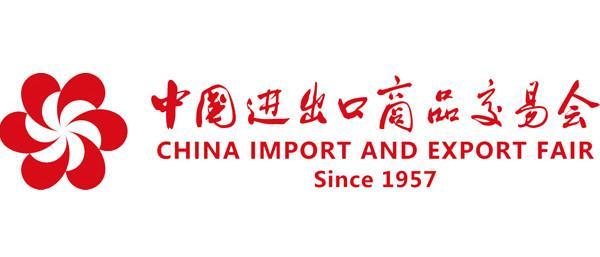
What Is PE Laminated Non-Woven Fabric?
Well folks, let's dive into the magical world of non-woven fabrics. The term may seem a little technical, but it's nothing you can't handle. So, what are non-woven fabrics, you ask? These are materials made from fibers held together by processes other than weaving, such as heat, chemicals, or pressure. The end result is a fabric with a unique set of properties, distinguishing it from traditional woven or knitted materials.Born out of necessity during World War II, non-woven fabrics have come a long way. Initially created as a substitute for cotton which was in short supply, they've morphed into a staple component of numerous industries. Impressive, right? Let's take a look at some of the types of non-woven fabrics, which come in all shapes and sizes, just like we do.What is PE Laminated Non-Woven Fabric?Alright, let's get down to the star of our show, PE laminated non-woven fabric. Here we have a non-woven fabric that's been given a boost. It's kind of like when Peter Parker got bitten by that radioactive spider and turned into Spider-Man. It's still the same non-woven fabric, but it's been enhanced with some additional superpowers.Definition of PE Laminated Non-Woven FabricA PE laminated non-woven fabric is, in essence, a non-woven fabric that has been coated with a layer of PE, or polyethylene. This gives it a set of enhanced properties, making it ideal for certain applications.Overview of PE (Polyethylene)PE, or polyethylene, is one of the most commonly used plastics worldwide. It's durable, flexible, and most importantly for our purposes, waterproof. It's like a protective raincoat that shields our non-woven fabric from the elements.Process of PE Lamination onto Non-Woven FabricThe lamination process, which might sound like a technical dance move, is actually quite straightforward. It involves applying a thin layer of PE onto the non-woven fabric. This is usually done using heat and pressure. The result is a fabric that maintains the beneficial properties of a non-woven, but with added water resistance and durability.Characteristics of PE Laminated Non-Woven FabricNow that we've introduced our main player, let's delve into what sets PE laminated non-woven fabric apart from the crowd. Physical PropertiesPhysically speaking, PE laminated non-woven fabrics are like the athletes of the fabric world. They're strong, resilient, and incredibly light. Whether it's enduring high pressure or stretching without tearing, these fabrics are up to the task. But don't let their strength fool you - these materials are also lightweights. Not in the derogatory sense, of course, but literally. They're light, making them easy to handle and transport. Chemical PropertiesOn a chemical level, these fabrics are the James Bonds of the material world - unflappable in the face of various chemicals and able to handle heat like a pro. Their resistance to many common chemicals makes them a safe choice in many applications, and their tolerance for heat means they can withstand high-temperature sterilization, something crucial in the medical field.Functional PropertiesFunctionally, these fabrics are a dream come true for many industries. Thanks to the PE layer, they're water-resistant, yet still breathable. It's like having an umbrella that keeps you dry in the rain but also lets the breeze through on a hot day. Can you think of anything better?Benefits Of Using PE Laminated Non-Woven FabricYou might be wondering why all this talk about PE laminated non-woven fabric matters to you. Well, the benefits of using this material are vast and touch upon many aspects of our lives. Let's take a look.Advantages in Different ApplicationsDifferent sectors reap different rewards from using PE laminated non-woven fabric, showcasing the versatility of this material.Medical FieldIn the medical field, the fabric's strength, breathability, and water resistance make it ideal for protective garments and face masks, offering both comfort and protection to healthcare workers.Packaging IndustryFor the packaging industry, the durability and water resistance of this fabric is a boon. Whether it's wrapping up fresh produce or protecting electronics from moisture, this fabric has it covered.Construction IndustryThe construction industry also benefits, from using the fabric as a high-quality and cost-effective alternative to traditional materials for things like house wrap or insulation.Cost-effectivenessIn terms of cost, PE laminated non-woven fabric offers a great bang for your buck. It provides superior performance and versatility at a lower cost than many traditional materials, making it an attractive option for businesses looking to trim expenses without compromising quality.Environmental ImpactNow, I know what you're thinking - what about the environment? Well, you'll be glad to know that PE laminated non-woven fabric has a few green credentials. For starters, it's recyclable, meaning it can be turned into new products rather than ending up in landfill. Plus, the production process is relatively energy-efficient, contributing to its sustainability.ConclusionWell folks, we've journeyed through the ins and outs of PE laminated non-woven fabric and it's been quite the adventure, hasn't it? We've uncovered its roots in the versatile world of non-woven fabrics, dove into the transformative process of PE lamination, and explored the unique characteristics that make it stand out in the fabric lineup. The versatility, resilience, and wide-ranging applicability of PE laminated non-woven fabric make it a material of great interest and potential. And while we've come to the end of our journey today, the exploration of this fabric's possibilities is just beginning. So next time you come across a non-woven fabric, remember, it's more than just a material. It's a testament to human ingenuity and our relentless pursuit of innovation. Now that's something to appreciate.
What Is PE Laminated Non-Woven Fabric?
Wenzhou Xinyu Non-woven Fabric Co., LTD.2023-09-26 13:46:14

What Is The Water-Blocking Tape?
Ever thought about the humble piece of tape? It's a staple in our toolboxes, right? Well, today, we're diving into a specific kind - the water-blocking tape. Now, this isn't your average run-of-the-mill adhesive strip. This little marvel is loaded with some fascinating science, and today, we're unraveling its mysteries.What exactly is the water-blocking tape? It's a type of tape that, as the name suggests, blocks water. But it isn't for patching up your leaky garden hose. It's used in cables, specifically communication and power transmission cables, to prevent water ingress that can lead to catastrophic failures. It's a vital component that protects these cables from moisture and water damage, ensuring our communication and power networks function seamlessly.The Science Behind Water-Blocking TapeGetting into the nitty-gritty, let's look at what makes up the water-blocking tape. It's typically constructed with a blend of synthetic materials and superabsorbent polymers (SAPs) —the magic ingredient. The tape is designed with a layer of these SAPs sandwiched between synthetic materials, which can quickly absorb and retain a significant amount of water. They're essentially water-loving materials that can absorb and retain extremely large amounts of a liquid relative to their own mass. In fact, they're so good that they can absorb hundreds of times their weight in water.The tape works by a process called capillary action, where water molecules are drawn into the small spaces within the tape's material. Think of it like a bunch of tiny straws, pulling the water in and holding it tight. It's a pretty cool process, but the key takeaway here is that the water stays locked within the tape and doesn't seep into the surrounding cables. Pretty neat, right?Different Types Of Water Blocking TapeWhen it comes to dealing with water in cable systems, not all tapes are created equal. Various factors, such as the composition, design, and size of water-blocking tapes, play significant roles in their effectiveness and suitability for different applications. Now, let's delve deeper into these types and their unique characteristics.Classification Based on Material CompositionFirst off, let's discuss the materials that make up water-blocking tapes. Depending on the application, the tape might require different levels of water absorption, strength, or flexibility, and this is where the choice of materials becomes crucial.Nonwoven Fabric TapesThe most common type of water-blocking tape consists of a nonwoven fabric substrate saturated with a superabsorbent polymer (SAP). The fabric offers strength and flexibility, while the SAP is responsible for the water-absorbing capabilities. This combination is typically used in fiber optic and copper communication cables.Laminated TapesLaminated tapes take it a step further by adding an extra layer of material, such as aluminum or plastic. The additional layer provides an enhanced barrier against water, making these tapes particularly suitable for more demanding applications like power transmission cables.Classification Based on Design and SizeThe design and size of a water-blocking tape can significantly influence its performance and applications. The range of options allows engineers and technicians to pick the perfect tape for their specific needs.Narrow vs. Wide TapesNarrow tapes are typically used in smaller cables or cables that require a high degree of flexibility. On the other hand, wider tapes are more suited for larger cables or those that need a stronger water barrier.Single vs. Double-Sided TapesSingle-sided tapes have one side coated with the superabsorbent polymer, whereas double-sided tapes have both sides coated. Double-sided tapes are ideal for applications that require higher water absorption, whereas single-sided tapes might be more appropriate for cables where only one side needs protection.Applications Of Water Blocking TapeWater-blocking tape plays an essential role in several industries due to its unique properties. Here are some of its key applications:Telecommunications: ● Used in fiber optic cables to prevent water ingress that can interfere with the transmission of light signals.● Used in copper cables to prevent corrosion and damage caused by water.Power Transmission:● Important in submarine power cables, which are exposed to high pressure and salty seawater. The tape prevents water from causing short circuits and protects the conductors from corrosion.● Used in underground power cables, where moisture in the soil could potentially seep into the cables.Aerospace Industry:● Used in aircraft cables to prevent any water damage that could affect the reliability of the aircraft's systems.Automotive Industry:● Used in various automotive cables, where it protects against water ingress, ensuring the vehicle's electrical systems function correctly.Oil and Gas Industry:● Used in umbilicals and flexible pipes, where it prevents seawater from causing damage.Marine Applications:● Used in marine communication and power cables, providing protection against the harsh marine environment.By preventing water damage, water-blocking tape ensures the reliability and durability of cable systems across multiple industries, reinforcing the networks that our modern society relies on.Conclusion:In conclusion, water-blocking tape is not just an adhesive strip; it's a vital guardian of our communication, power, and transportation networks. Let us appreciate its significance and the significant role it plays in keeping us connected, functional, and moving forward in this ever-advancing world.
What Is The Water-Blocking Tape?
Wenzhou Xinyu Non-woven Fabric Co., LTD.2023-09-11 14:42:41

What Is Non-Woven Interlining?
Hey there, you fashion enthusiasts, garment makers, and textile science geeks! Have you ever held a garment and wondered what makes it hold its shape? Or what gives your favorite dress its perfect fit? We're about to embark on an exciting journey to uncover the unseen hero of the fashion world—interlining. Interlining, a vital part of any garment, does not usually get much attention. But its role is so significant that without it, the fashion industry would lose its sheen. It's the unsung hero that adds body and stability to the garment, enhancing its overall look and feel. This blog aims to uncover the mysteries behind interlining, focusing specifically on one of its most popular forms, the non-woven interlining. Buckle up, and let's dive right in!Understanding Interlining Before we venture deep into non-woven interlining, let's first break down what interlining is. It's like the unsung backup singer to your favorite pop star – not always visible but adds depth and strength to the performance. Interlining is an extra layer of fabric sandwiched between two outer layers to provide support, shape, and sometimes insulation. The practice dates back to the dawn of garment production itself. Initially, tailors used horsehair as interlining, but with technological advances and the need for more efficient manufacturing processes, synthetic fibers have taken over. You'll be amazed at how many types of interlining there are, but for this discussion, let's focus on the three main types: woven, non-woven, and knitted interlining.Detailed Look at Non-Woven InterliningIt’s the star of today's show, folks. This type of interlining is essentially a fabric that is bonded together without weaving or knitting—hence, the name 'non-woven'. It's unique because of its process of creation, distinct from traditional fabric-making methods. The fantastic bit is that it can be tailored to possess specific properties such as strength, absorbency, stretch, and more. The non-woven interlining is like the multi-tasker of the garment industry. It's produced by entangling fibers together using mechanical, heat, or chemical processes, creating a flat structure that is robust, resilient, and ready to add some much-needed muscle to your garments.Applications Of Non-Woven Interlining The beauty of non-woven interlining lies in its versatility. Its multiple characteristics make it an ideal choice for a myriad of applications. Fashion Industry Non-woven interlining plays a vital role in the world of fashion and apparel. It's what gives the clothes their structure and shape, ensuring a perfect fit every time. GarmentsNon-woven interlining finds extensive application in various types of garments. It's used in shirts to give collars, cuffs, and plackets their rigidity, helping them maintain their shape even after multiple washes. Similarly, in jackets, suits, and blazers, non-woven interlining is used in lapels, pockets, and waistbands to offer structure and durability.AccessoriesNot just limited to garments, non-woven interlining is also employed in the making of fashion accessories such as hats, belts, ties, and handbags, offering them stability and shape.Home Textiles Non-woven interlining has also made its mark in the world of home textiles, enhancing the durability and aesthetics of various products. Curtains and DraperiesInterlining can significantly improve the drape and fullness of curtains, giving them a luxurious feel and look. It also adds weight, making the curtains hang better, and also provides thermal insulation and light-blocking properties.Upholstery and CarpetsNon-woven interlining is used in upholstery to add a body to the fabric and improve the feel of furniture pieces. It also prolongs the life of the upholstery by preventing the outer fabric from stretching. In carpets, interlining serves as a backing material that holds the pile fabric in place and provides additional cushioning.Industrial ApplicationsNon-woven interlining is not restricted to the textile and fashion world; it has industrial uses too. Its diverse characteristics make it an ideal choice for a variety of applications. Automotive IndustryThe automotive industry uses non-woven interlining in various ways. It's used in the manufacturing of car seats, headliners, door panels, and trunk linings. Non-woven interlining provides comfort, aesthetic appeal, and noise reduction in automotive interiors.Medical FieldNon-woven interlining finds extensive use in the medical field. It's used in the production of surgical gowns, face masks, and wound dressings. It is favored for its breathability, barrier properties, and comfort.Benefits Of Non-Woven InterliningNow, let's break down why non-woven interlining is so popular.Advantages Over Other Types of InterliningHere are some Advantages over other types of Interlining:● Versatility: Non-woven interlining is versatile and can be used in a variety of applications across different industries, from clothing and home textiles to automotive and medical industries.● Cost-effectiveness: The production process of non-woven interlining is relatively simple and less time-consuming than woven or knitted interlining, making it a more cost-effective option.● Ease of production: Non-woven interlining does not require the traditional yarn spinning and weaving processes. This simplifies the manufacturing process and makes it easier to produce on a large scale.Environmental ImpactNon-woven interlining often utilizes recycled materials in its production, aligning with global efforts toward sustainable manufacturing practices.● Potential for recycling and reuse: Non-woven interlining can often be made from recycled materials, and in turn, the non-woven products themselves can often be recycled, contributing to a circular economy.● Biodegradability: Depending on the fibers used, some non-woven interlining materials are biodegradable. This can have a significantly lower environmental impact than other forms of interlining.● Lower carbon footprint: The simplified manufacturing process of non-woven interlining generally requires less energy and therefore produces less carbon emissions compared to the production of woven or knitted interlining.User ExperienceHere are some Advantages for Users:● Comfort: Non-woven interlining often offers superior comfort due to its breathability and flexibility. It can mold easily to the body, making it a preferred choice for garments and medical textiles.● Durability: Despite its lightweight nature, non-woven interlining is known for its strength and durability, making it suitable for applications where longevity is required.● Improved aesthetics: Non-woven interlining can improve the overall look and feel of products. In clothing, it adds structure and form, while in home textiles, it adds to the fullness and draping qualities. ConclusionWhat a journey, folks! From understanding the world of interlining to exploring the ins and outs of non-woven interlining, we've covered a lot of ground. This unsung hero of the garment industry is versatile, cost-effective, and environmentally friendly, making it an essential tool in the fashion and textile industry. As we continue to innovate and strive for sustainability, the importance of non-woven interlining is only set to grow. Who knows what exciting developments await us in the future? So stay curious, stay creative, and most importantly, stay fashionable!
What Is Non-Woven Interlining?
Wenzhou Xinyu Non-woven Fabric Co., LTD.2023-09-05 17:18:15

Understanding The Difference Between Woven And Non-Woven Filter Fabric
Have you ever wondered what's standing between you and that airborne nastiness floating around? It's filter fabric. Now, let's dive into the nitty-gritty and figure out just what this stuff is. The term filter fabric might seem self-explanatory, but there's more than meets the eye. These unique materials play a vital role in various industries, filtering out unwanted particles, keeping our air and water clean, and yes, even saving lives in some cases. Have you ever taken a close look at your home air purifier or water filter? Maybe not, but I bet now you'll be tempted. Those are filter fabrics at work. They form the basis of several filtration devices, separating impurities from essential elements in various applications. To further understand this, let's break it down into the two main types of filter fabrics: woven and non-woven. Each has its own characteristics, advantages, and shortcomings, but don't sweat, we're here to unravel it for you.An Overview Of Woven Filter FabricsWhat comes to mind when you think of woven fabrics? A tight-knit family of threads interlocking with one another? You're pretty close! Woven filter fabrics are made just like that - they're a tight matrix of threads, crisscrossing each other to create a fabric. To get technical, the process involves interlacing two sets of threads at right angles to each other: the warp (length) and the weft (width). This interlacing process results in a fabric that's firm, stable, and incredibly reliable for certain types of filtration. The features of woven filter fabrics vary, but one key characteristic is their ability to filter out very fine particles. This is due to the precision of the weaving process, which creates tiny, consistent pore sizes. Yet, woven fabrics aren't without their drawbacks, but we'll get into that a bit later. Their manufacturing process is a little more complex than you'd imagine. These fabrics aren't just weaved on any old loom. No, it requires high-grade equipment and precise control to ensure the fabric comes out just right. Understanding Non-Woven Filter Fabrics"Non-woven" sounds fancy, right? But it's quite straightforward. Non-woven filter fabrics are just that - fabrics that aren't woven. Instead, they're made by bonding fibers together using heat, chemical, or mechanical means.Non-woven technology might sound a bit new-age, but it's been around for a while. These fabrics are made by entangling fibers into a kind of web, usually through a process called carding. The result is a fabric that's versatile and flexible but has a different set of characteristics compared to its woven counterparts.And just like woven filter fabrics, non-woven ones have their place in many applications. Key Differences Between Woven And Non-Woven FiltersNow that we've delved into the specifics of woven and non-woven filter fabrics, it's time to examine the contrasts between these two. The differences run deeper than you might think, impacting not only how they're made but also their performance, cost, and environmental impact. Non-Woven Filter FabricWoven FabricComparison in Terms of Manufacturing ProcessAt their core, the key difference between woven and non-woven filter fabrics lies in their manufacturing process. Remember how woven fabrics are made by weaving threads together, while non-woven fabrics are produced by bonding fibers? Well, this difference in production methods leads to a host of unique characteristics for each.This is where the rubber meets the road. Depending on the application, the method of production can have a significant impact on the functionality and efficiency of the fabric. Let's examine these differences a bit closer, shall we?Performance DifferencesPerformance is where the battle between woven and non-woven filter fabrics really heats up. On one hand, woven fabrics are renowned for their strength and ability to filter out fine particles. On the other, non-woven fabrics have high permeability and flexibility, making them versatile for various applications.So, who wins? Well, it depends on the application. In some cases, the strength of woven fabrics might be preferable, while in others, the high permeability and versatility of non-woven fabrics might be more beneficial. It's all about finding the right fit for your needs.We've talked about manufacturing and performance, but there's more to this comparison. Let's delve into the differences in applications, cost, and environmental impact. Because, let's face it, these things matter, too. Differences in ApplicationsIn terms of application, both woven and non-woven filter fabrics have their unique uses due to their respective properties. For instance, the fine filtration capability of woven fabrics makes them suitable for industrial filtration, while the high permeability and flexibility of non-woven fabrics make them ideal for air and water filtration, and for use in the healthcare industry.ConclusionStepping back and looking at the landscape of filter fabrics, it's clear there's no one-size-fits-all solution. Each type, be it woven or non-woven, has its own unique set of attributes that make it suitable for specific applications. The trick lies in understanding the needs of your specific application and matching it to the right fabric.In the end, it's not about choosing the "best" fabric. It's about choosing the right one for your specific circumstances and needs. And that, dear reader, is the real takeaway from our journey into the world of filter fabrics.
Understanding The Difference Between Woven And Non-Woven Filter Fabric
Wenzhou Xinyu Non-woven Fabric Co., LTD.2023-08-22 10:02:36
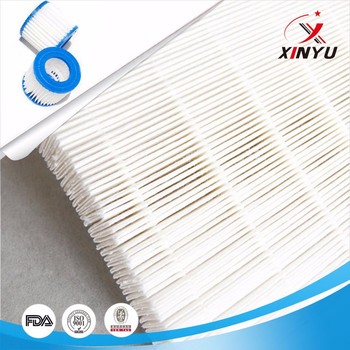
What Is Non-Woven Fabric?
From the protective masks we wear to the upholstery on our furniture and even the landscape fabric in our gardens, non-woven fabrics are a part of our daily lives in many ways. Yet, despite their widespread use, these versatile materials often go unnoticed and unappreciated. So what exactly is non-woven fabric? As the name suggests, it's a type of fabric that isn't woven or knitted together but is instead made by bonding or interlocking fibers or filaments together using mechanical, thermal, or chemical methods. In this article, we'll delve into the fascinating world of non-woven fabrics. We'll explore their different types, the benefits they offer, and the numerous ways they're applied across various industries. So, if you're ready to gain a new appreciation for these unsung heroes of material science, read on!The Different Types Of Non-Woven FabricsThere are several different types of non-woven fabrics, each with its unique set of properties and uses.Non-Woven FabricSpunbond Non-Woven FabricsSpunbond non-woven fabrics are created by extruding melted polymer fibers through a spinnet, which are then spread onto a conveyor belt to cool and bind together. Known for their high strength and durability, these fabrics are commonly used in car interiors and furniture.Meltblown Non-Woven FabricsMeltblown non-woven fabrics, similar to spun-bond, involve melting thermoplastic and extruding the molten polymer through tiny nozzles, but the fibers produced are much finer. This makes the fabric excellent at filtering out particles. Meltblown non-woven fabrics are typically found in masks and filters.Needle-Punched Non-Woven FabricsThe production of needle-punched non-woven fabrics involves mechanically entangling the fibers together. This creates a fabric that is resilient and resistant to deformation. Needle-punched non-woven fabrics are widely used in geotextiles and carpet backing.Hydroentangled or Spunlace Non-Woven FabricsHydroentangled or spunlaced non-woven fabrics are created by using high-pressure water jets to entangle the fibers. These fabrics have a soft, textile-like appearance and feel, making them suitable for use in items such as wipes and medical dressings.Thermally Bonded Non-Woven FabricsThermally bonded non-woven fabrics are produced by using heat to melt and bond the fibers together. The heat source can be infrared, hot air, or direct contact with heated calendars. These fabrics are often used in mattress quilting, hygiene products, and insulation material due to their high loft and insulation properties.Chemically Bonded Non-Woven FabricsChemically bonded non-woven fabrics use a binder, which is usually a liquid, to bond the fibers together. They have the advantage of being able to use a wide variety of fibers, even those with low melt points or heat sensitivity. Common applications include upholstery, wallpaper, and tea bags.Wetlaid Non-Woven FabricsWetlaid non-woven fabrics involve dispersing the fibers in water, similar to papermaking, and then draining the water to form a web, which is then bonded. This type of non-woven fabric has a high resemblance to textile fabrics and can have very fine structures. It's often used in medical products, filtration, and some automotive applications.The Benefits Of Nonwoven FabricHere are some key benefits of non-woven fabric:● Versatility: Non-woven fabrics can be designed to have specific properties, such as being absorbent, soft, firm, or flame retardant.● Cost-effectiveness: As they're not made from yarn, non-woven fabrics are typically less expensive to produce than woven or knitted fabrics.● Durability: Non-woven fabrics can be very strong and resilient, able to withstand a lot of wear and tear.● Doesn't fray: Non-woven fabrics don't unravel, which means they don't require hemming or other finishes. This can save time and money in the production process.● Lightweight yet strong: Despite being relatively lightweight, non-woven fabrics can be very strong and hard-wearing.● Sustainability: Many non-woven fabrics are made from recycled materials, and the production process often uses less water and energy than weaving or knitting. Additionally, many non-woven fabrics are recyclable, and some are even biodegradable.● Hygiene: Non-woven fabrics are often used for disposable items in the medical and cleaning industries due to their cleanliness and the fact that they can be easily and economically replaced.● Customizable: These fabrics can be created with a specific thickness, color, or level of opacity, offering options for various applications.● Filtration: Certain types of non-woven fabric, such as melt-blown fabrics, are excellent at filtering out particles, making them suitable for use in air and water filters, and masks.Applications Of Non-Woven FabricNon-woven fabrics have a wide range of applications, thanks to their versatility and durability. Medical IndustryNon-woven fabrics play a crucial role in the medical field, where their disposability and sterility are key advantages. They are used in making disposable surgical gowns, caps, masks, and bandages. Wound care dressings and diabetic supplies also utilize non-woven fabrics due to their absorbent properties.Medical Non Woven CapMedical non-woven fabricsAutomotive IndustryIn the automotive industry, non-woven fabrics are used in car interiors for seat covers, headliners, and air and fuel filters due to their filtration capabilities. They're appreciated for their durability, resilience, and sound-absorption qualities.AgricultureNon-woven fabrics are widely used in agriculture as crop covers to protect plants from harsh weather conditions. They're also used as weed control fabrics, pest barriers, and in irrigation due to their permeability and strength.ConclusionIn conclusion, non-woven fabrics are versatile, durable, and cost-effective material that finds use in various industries. From disposable medical products to car interiors, these fabrics offer unique properties that can't be achieved with traditional woven or knitted fabrics. Whether we realize it or not, non-woven fabrics are an integral part of our daily lives, demonstrating the incredible versatility of this often underappreciated material.
What Is Non-Woven Fabric?
Wenzhou Xinyu Non-woven Fabric Co., LTD.2023-08-18 15:11:22
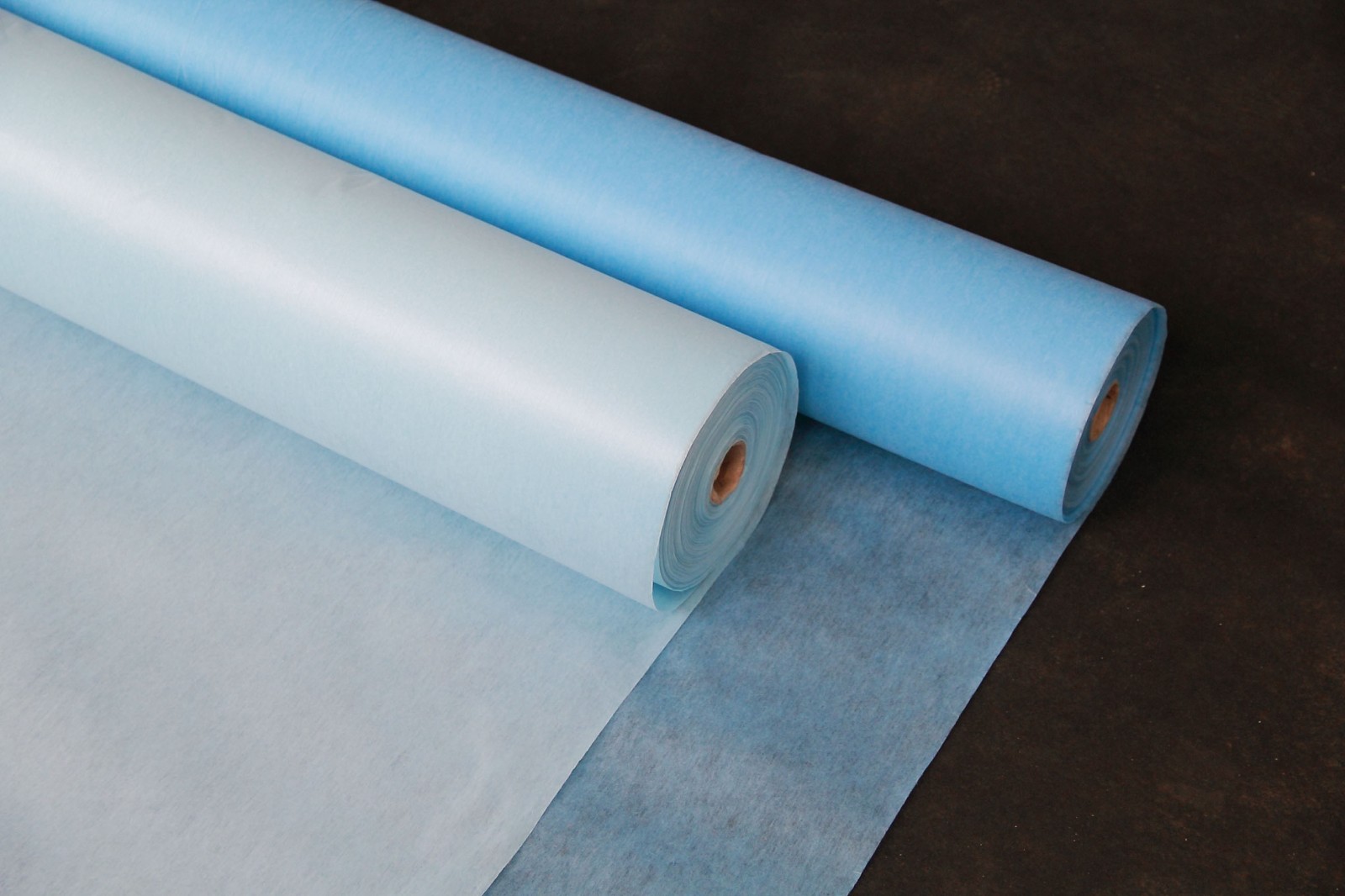
Fairs Around The World
Rayson will attend the Fairs held in different cities around the world in the coming months.Now our colleagues are in the Gudalajara Furniture Fair which is held in Expo Gudalajara Center from Aug.16 to 19,2023. Our Booth No.5015&5017,non woven fabric and mattress are our main display products there. Hope to meet you soon.Besides,we will participate the CIFF in Shanghai,GIF&EXPO in Kentucky,Canton Fairs in Guangzhou and some other fairs in 2023,details as following.1)Aug,16th-19, Gudalajara,Mexico (GFF) Booth No.:5015&50172)Sep, 5th-8th, Shanghai China (CIFF) 3)Sep,19-21th, Shanghai China (Cinte2023)4)Oct,19-21, Kentucky USA(GIF+EXPO)5)Oct,23-27, 134TH Canton Fair ,2nd phase Oct,31-Nov,4, 134TH Canton Fair, 3rd phase 6)Nov,8-10th Shanghai China, (SINCE 23)Welcome to visit us.Any inquiry, you can feel free to contact us by email.
Fairs Around The World
Foshan Rayson Non-woven Co., Ltd.2023-08-18 10:30:25

Let’s meet at INDEX™23, April 18th-21st in Switzerland!
Let’s meet at INDEX™23, April 18th-21st in Switzerland!Stand name:Dongguan Jinchen Nonwoven Co., LtdDate:18th~21st April 2023Address: Palexpo SA, Route François Peyrot 30, 1218 Le Grand Saconnex, Geneva, SwitzerlandBooth No: 4589Jinchen Nonwoven Co., Ltd will attend INDEX™23, which is the world’s leading nonwovens exhibition in Geneva, Switzerland, from April 18th-21st, 2023.INDEX, as the largest nonwovens exhibition, is organized by the European Nonwovens Association (EDANA) and covers everything from nonwoven machinery, adhesives, binders, chemicals and composites to surface treatments and waste handling equipment. The last INDEX™20 had 500+ exhibitors from 42 countries and regions around the world, and it attracted 12,758 professional visitors from 100+ countries and regions.As one of the key nonwoven players in China, Jinchen will join and exhibit, displaying our products for diverse applications including Medical/Healthcare, Geotextiles, Furniture and Packaging, etc. We do believe that it will be a valuable opportunity for us to learn more about market trends and needs, enhance our brand exposure, build contacts, and establish trust with visitors during the exhibition. Sincerely welcome to our booth and look forward to meeting you there!
Let’s meet at INDEX™23, April 18th-21st in Switzerland!
Dongguan Jinchen Nonwoven Co., Ltd.2023-04-01 09:01:56
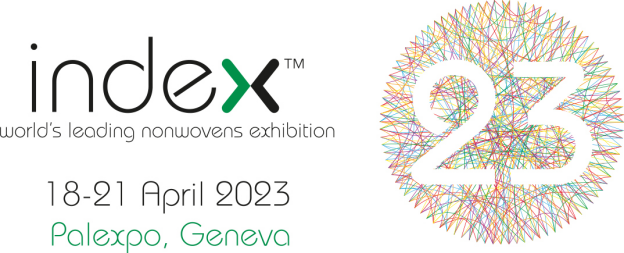
Let’s meet at INDEX™23, April 18th-21st in Switzerland!
Let’s meet at INDEX™23, April 18th-21st in Switzerland!Stand name:Dongguan Jinchen Nonwoven Co., LtdDate:18th~21st April 2023Address: Palexpo SA, Route François Peyrot 30, 1218 Le Grand Saconnex, Geneva, SwitzerlandBooth No: 4589Jinchen Nonwoven Co., Ltd will attend INDEX™23, which is the world’s leading nonwovens exhibition in Geneva, Switzerland, from April 18th-21st, 2023.INDEX, as the largest nonwovens exhibition, is organized by the European Nonwovens Association (EDANA) and covers everything from nonwoven machinery, adhesives, binders, chemicals and composites to surface treatments and waste handling equipment. The last INDEX™20 had 500+ exhibitors from 42 countries and regions around the world, and it attracted 12,758 professional visitors from 100+ countries and regions.As one of the key nonwoven players in China, Jinchen will join and exhibit, displaying our products for diverse applications including Medical/Healthcare, Geotextiles, Furniture and Packaging, etc. We do believe that it will be a valuable opportunity for us to learn more about market trends and needs, enhance our brand exposure, build contacts, and establish trust with visitors during the exhibition. Sincerely welcome to our booth and look forward to meeting you there!
Let’s meet at INDEX™23, April 18th-21st in Switzerland!
Dongguan Jinchen Nonwoven Co., Ltd.2023-04-01 09:01:56

What is stitch bond non woven fabric?
A stitchbond nonwoven fabric is manufactured on a weaving machine that bonds the web or holds the web in place with longitudinal yarns. This method results in the fabric having a soft texture.It is ideally suited as an exterior layer for use in mattress and bedding with good wear resistance and excellent uniformity. Due to its strength, it can also be used in products where this is critical – such as the manufacture of disposable patient lifting slings.Eco-friendly, non-polluting, anti-tear, good tensile strength, air-permeable, excellent thermal insulation when raised and made using recycled polyester (RPET) yarn recovered from drink bottles and fibre;Other application of stitch bond non woven fabric. WaterproofingFootwearHome TextilesDecorative TextilesFurniture, Mattresses, and BedsRe-usable Shopper BagsPackagingMedical ProductsConstructionGeo Textiles Rayson can supply you stitch bond fabric weighing from 60gsm to 220gsm with width 2cm to 320cm in black, white and grey. Available coatings are Fire Retardant (FR) and Zinc.
What is stitch bond non woven fabric?
Foshan Rayson Non-woven Co., Ltd.2023-03-17 18:54:05
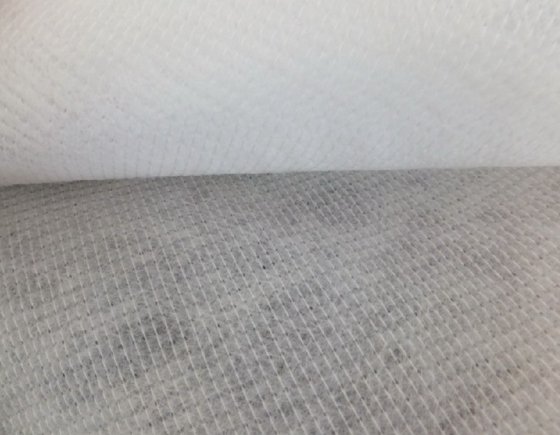
pp nonwoven fabric
Non-woven fabric, also known as non-woven fabric, is composed of directional or random fibers. It is a new generation of environmentally friendly materials. Low cost, recyclable and so on. For example, polypropylene (pp material) pellets are mostly used as raw materials, which are produced by continuous one-step process of high-temperature melting, spinning, laying, and hot-pressing coiling. It is called cloth because of its appearance and certain properties. "
pp nonwoven fabric
Foshan Rayson Non-woven Co., Ltd.2023-03-04 11:15:26
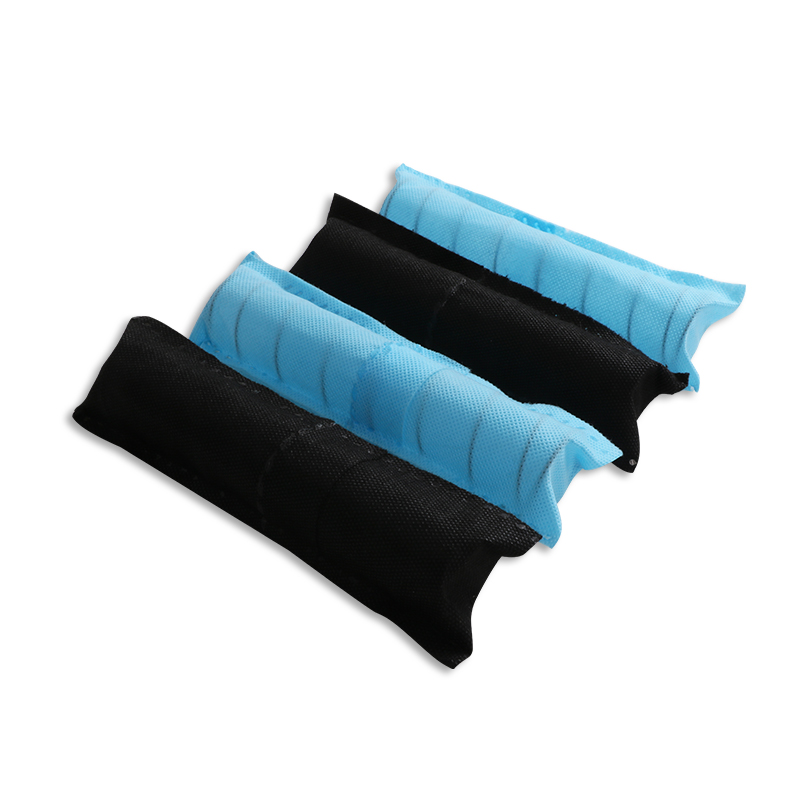
Rayson resumed work smoothly on 31 Jan., 2023
New year, new weather, new year, new journey, with the end of the Spring Festival holiday and the successive arrival of personnel in various positions, Foshan Ruixin Nonwoven Co., Ltd. began to resume work and production in the new year.On January 31, the production manager organized a work and production resumption meeting in the production workshop. The meeting required all employees to clean up their mood as soon as possible and devote themselves to the front-line production work. After the holiday, the front-line technicians also seized the time to inspect the production equipment to ensure that they can start up smoothly and complete customer orders with quality and quantity.This year is the first year since the epidemic was lifted, and it will be a year full of opportunities and challenges.Rayson has already made preparations in advance. The network and the exhibition will go together on two legs. We will show our products to customers through multiple channels, so that new and old customers can see Rayson online and offline.Hope to start cooperation with more customers this year.
Rayson resumed work smoothly on 31 Jan., 2023
Foshan Rayson Non-woven Co., Ltd.2023-02-04 15:31:31
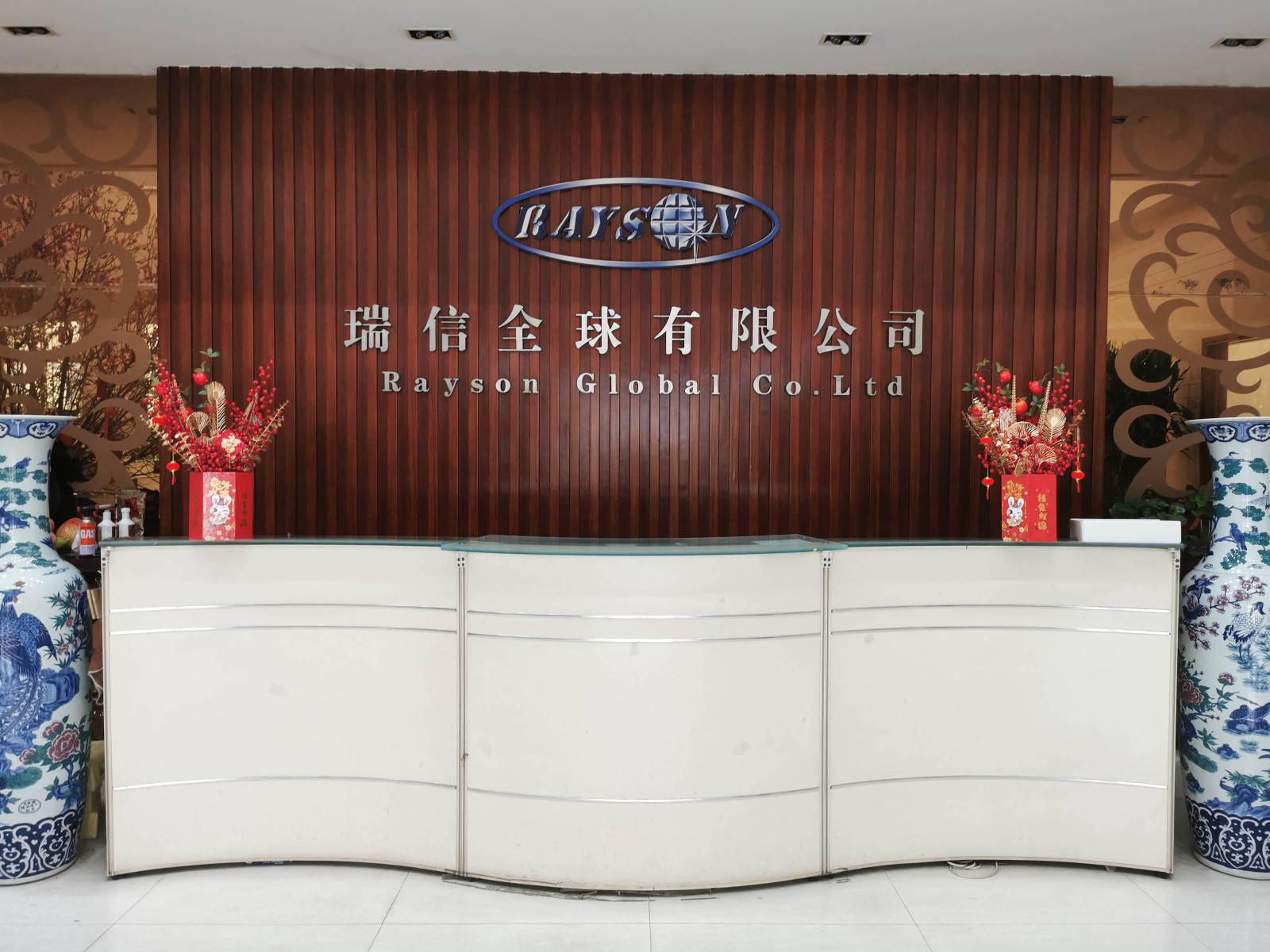
Foshan Ruixin Non Wovens Co., Ltd. passed the 2022 annual audit of the ISO quality/environmental management dual system
On 01-02 Dec., 2022, the New Century ISO audit team came to the factory to conduct an annual review on the implementation of our ISO quality and environmental management system. Within two days, the audit team passed strict on-site inspections and in-depth inspections of the records of the two systems of quality and environment, and finally assessed that our ISO quality/environmental management system passed the audit. Rayson ISO quality and environmental management system certificationFor production enterprises, product quality is an important factor for the sustainable development of enterprises, and the behavior of enterprises in production activities will also have an impact on the environment. Foshan Ruixin Non Wovens Co., Ltd. has always attached great importance to quality and shouldered a deep sense of social responsibility. In order to make the production development and management of the enterprise more standardized, the company introduced the ISO quality and environmental management dual system in 2018, and firmly established itself in daily work. Implement system standards. Clean and orderly Non Woven production workshopThis year is the fourth year for our company to implement the dual system. Under the guidance of the ISO quality and environment dual system, our company has formed a relatively complete system for the standardization of production and quality inspection, as well as environmental management. Strict quality control procedures and standards have been established in terms of materials, processes and finished products of non-woven fabrics and mattresses. The factory is equipped with a professional inspection room and dozens of sophisticated testing instruments, which technically guarantee the quality of the products. Rayson's non-woven fabric quality inspection roomThe company not only conducts daily sampling inspections on products, but also sends them to third parties for more authoritative inspections every year. The non-woven fabrics produced by our company have obtained professional certifications such as SGS, OEKO-TEX, and IKEA, and the mattresses have also passed MA certification. We believe that quality is a successful partner and the premise of all trust!
Foshan Ruixin Non Wovens Co., Ltd. passed the 2022 annual audit of the ISO quality/environmental management dual system
Foshan Rayson Non-woven Co., Ltd.2022-12-17 14:15:06
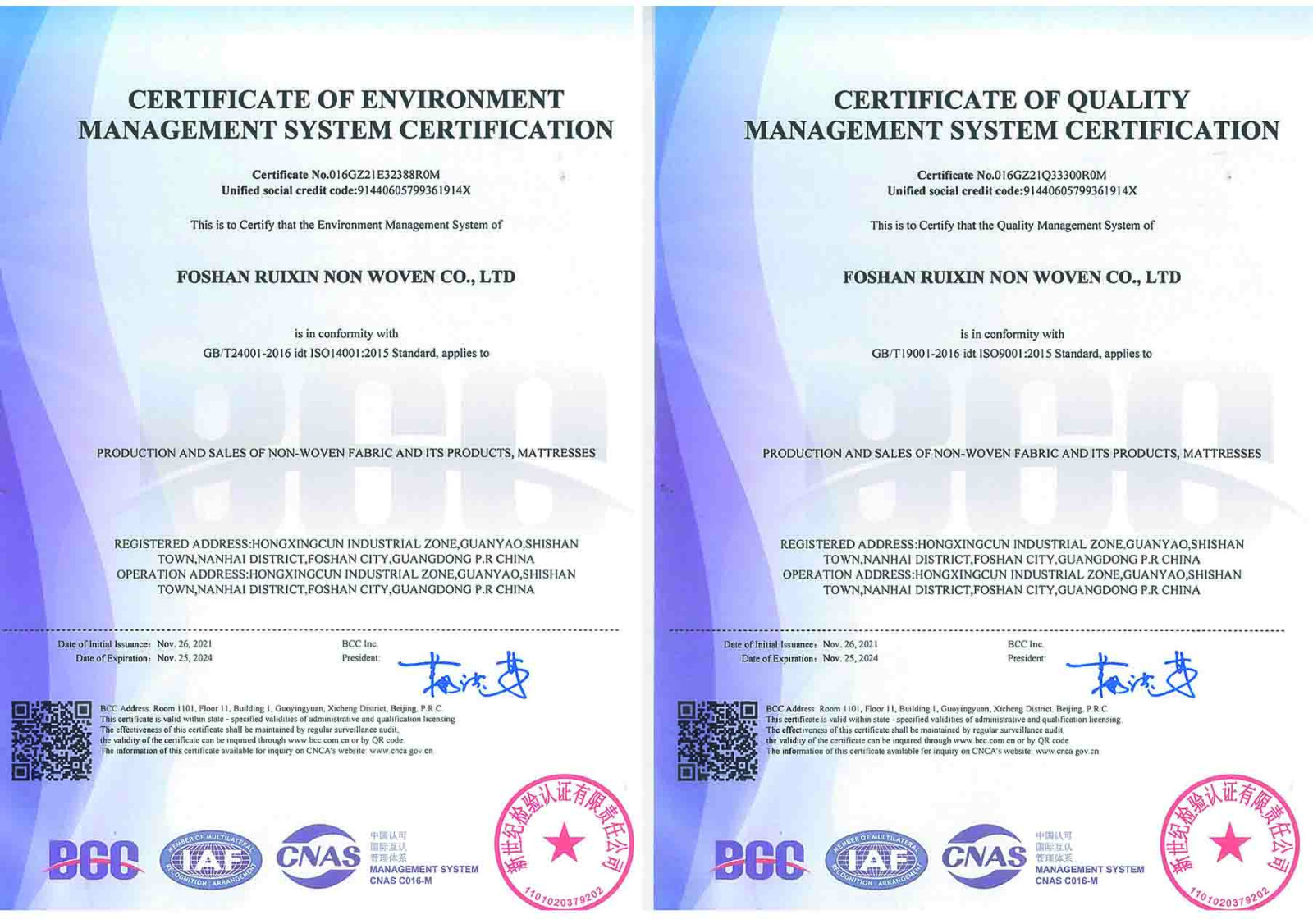
How to use frost protection fleece?
How to use frost protection fleece? What is frost protection fleece? The frost protection cover is made of 17gram ultra-fine non-woven fabric, which is soft, light, breathable, durable, moderate thickness, reusable, prevents ultraviolet rays and maintains temperature. Provide good breathing and growth space for plants, and protect plants from freezing or frost. Have 80% light transmission.Frost protection fleece is available in a range of sizes and varies in quality as well as weight – better quality fleece should last for several years if used carefully. It should be durable, being ultra-violet (UV) stabilised to withstand sunlight, tear-proof, washable and rot-proof. The downside of fleece is that it can’t be recycled, so buying good quality material that will give the longest life is most sustainable compared to cheap fleece that may only last a season.When to use frost protection plant cover? WinterUse fleece outdoors to protect plants from frost, cold winds, or hail damageIn unheated greenhouses or polytunnels, use fleece to wrap or cover plants to provide additional protection against frostUse heavy duty fleece as greenhouse insulation instead of bubble polytheneSpringCover soil with fleece for a week or two to warm it before sowingGrow crops under fleece to raise the temperature and give an earlier harvest compared to un-covered cropsPut over newly planted frost-tender plants to protect from late frosts, wind, or hailProtect early potatoes from frostFeatures of non woven garden fleece: Good Permeability70% Light TransmissionLightweight and BreathableHigh Strength and Low FluffConstant Temperature and WarmthLarge Coverage Area up to 120-800 sq.ftHigh-Quality Non-woven Fabric MaterialHow to use frost protection fleece: You can cover the plant covers for freeze over your the plants loosely directly and then secure the plant frost blanket with soil, stones or staples. You can also support the floating row covers with a hoop, make enough room for plants to breath and grow. You could also cut the plant covers into different sizes for different purposes.
How to use frost protection fleece?
Foshan Rayson Non-woven Co., Ltd.2022-11-04 11:46:15
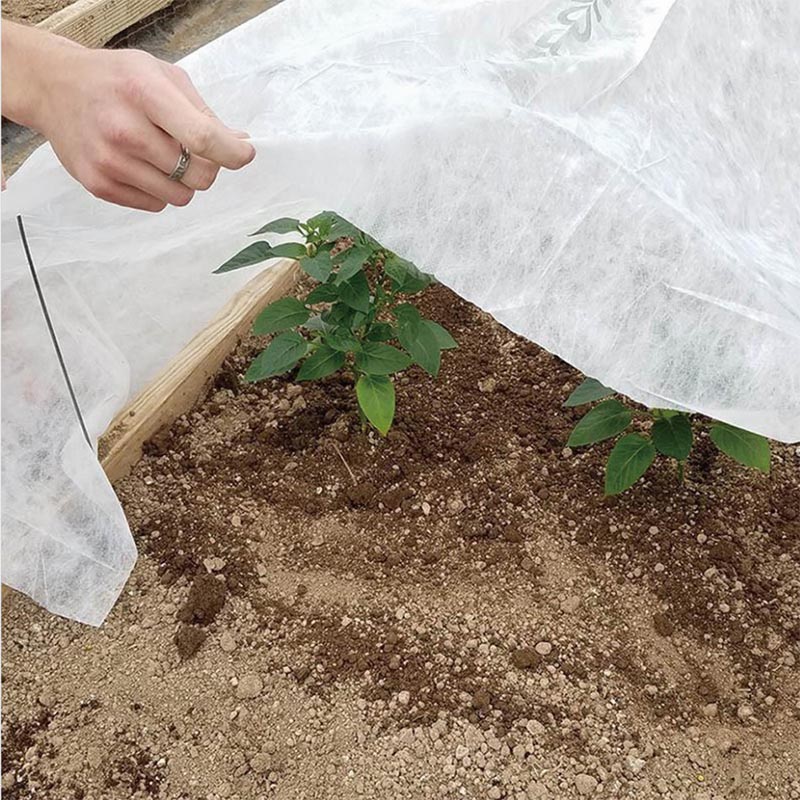
HALLOWEEN IS COMING
Halloween is an autumn holiday that Americans celebrate every year. It means “holy evening,” and it comes every October 31, the evening before All Saints’ Day. However, it is not really a church holiday, it is a holiday for children mainly. Every autumn, when the vegetables are ready to eat, children pick large orange pumpkins. Then they cut faces in the pumpkins and put a burning candle inside. It looks as if there were a person looking out of the pumpkin! These lights are called jack-o’-lantern, which means “Jack of the lantern”. The children also put on strange masks and frightening costumes every Halloween. Some children paint their faces to look like monsters. Then they carry boxes or bags from house to house. Every time they come to a new house, they say, “Trick or treat! Money or eat!” The grown-ups put treat-money or candy in their bags. Not only children, but most grown-pus also love Halloween and Halloween parties because on this day, they can disguise themselves as personages or ghost as their imaginations will lead them. This brings them the satisfaction of being young.Beautiful and practical non-woven candy bag has been widely used in our life. Compared with plastic bags, non-woven fabric bags are easier to print patterns, have strong toughness, more colors available, and also can be used repeatedly. The non-woven bag produced by Jinchen is more in line with the pursuit of environmental protection in modern society.Jinchen Nonwoven has 8 advanced PP spunbond nonwoven production lines, 3 bag making machines and 3 printing machines, provide all kinds of customization service. We can customize non-woven bags according to your requirements, support any kinds of logo, patterns and pictures printed on nonwoven bag. If you are interested in learning more about our products, call us at (86) 769 82270666, and we will gladly provide you with all the advice you require.
HALLOWEEN IS COMING
Dongguan Jinchen Nonwoven Co., Ltd.2022-10-31 11:07:39

HALLOWEEN IS COMING
Halloween is an autumn holiday that Americans celebrate every year. It means “holy evening,” and it comes every October 31, the evening before All Saints’ Day. However, it is not really a church holiday, it is a holiday for children mainly. Every autumn, when the vegetables are ready to eat, children pick large orange pumpkins. Then they cut faces in the pumpkins and put a burning candle inside. It looks as if there were a person looking out of the pumpkin! These lights are called jack-o’-lantern, which means “Jack of the lantern”. The children also put on strange masks and frightening costumes every Halloween. Some children paint their faces to look like monsters. Then they carry boxes or bags from house to house. Every time they come to a new house, they say, “Trick or treat! Money or eat!” The grown-ups put treat-money or candy in their bags. Not only children, but most grown-pus also love Halloween and Halloween parties because on this day, they can disguise themselves as personages or ghost as their imaginations will lead them. This brings them the satisfaction of being young.Beautiful and practical non-woven candy bag has been widely used in our life. Compared with plastic bags, non-woven fabric bags are easier to print patterns, have strong toughness, more colors available, and also can be used repeatedly. The non-woven bag produced by Jinchen is more in line with the pursuit of environmental protection in modern society.Jinchen Nonwoven has 8 advanced PP spunbond nonwoven production lines, 3 bag making machines and 3 printing machines, provide all kinds of customization service. We can customize non-woven bags according to your requirements, support any kinds of logo, patterns and pictures printed on nonwoven bag. If you are interested in learning more about our products, call us at (86) 769 82270666, and we will gladly provide you with all the advice you require.
HALLOWEEN IS COMING
Dongguan Jinchen Nonwoven Co., Ltd.2022-10-31 11:07:39

Chinese Triditional Festival------Mid Autumn Festival coming Sunshine festival party
Chinese Triditional FestivalMid Autumn Festival coming Sunshine festival party Since ancient times, the Chinese people usually celebrate harvest in the Mid- Autumn, which is similar to the custom of celebrating Thanksgiving in the North America. The tradition of celebrating Mid-Autumn festival became popular throughout China in the early Tang dynasty.The lunar August 15 is a day for people worshiping the moon. On this day, under the dazzling bright moon,families reunite and enjoy the moon’s beauty. In 2006, Mid-Autumn festival was listed as one of China's cultura heritage, and in 2008, it was classified as a public holiday. Moon cakes, as indispensable delicious food of the festival, were gifts people sent to families and friends during the festival and usually eaten on family gatherings. There are characters of “longevity”,"good fortune” and “harmony” on the Traditional moon cakes. The company will make a gift(moon cake)for their staff and want they have a time to accompany with their family , so , they will have a vacation on this day . People will prepare so much foods and enjoy with all family member .This day , the moon would be the most round on one year. People reckon this round moon to be a symble of birdnesting Sunshine non woven fabric factory host a typical activity on the Mid Autumn Festival , “bobing” (a dice game). the winner would be the man who have 4 dice with four point. He will get the grand prize. A nice game for improve our cohesion. Sunshine nonwoven fabric factory would be a factory that produce all kinds nonwoven products, included the S/SS/SSS/SMS/SMMS/MELTBLOWN and the spunlace nonwoven fabric . Can offer the width min 2cm ,max 16.2m, the weight 9gsm-220gsm in every color. If you have any interest in ,just feel free to contact me ,will try our best to help you.Sunshine Nonwoven fabric Fatory2022.9.9
Chinese Triditional Festival------Mid Autumn Festival coming Sunshine festival party
Sunshine Nonwoven Fabric Co.,Ltd2022-09-09 09:42:36
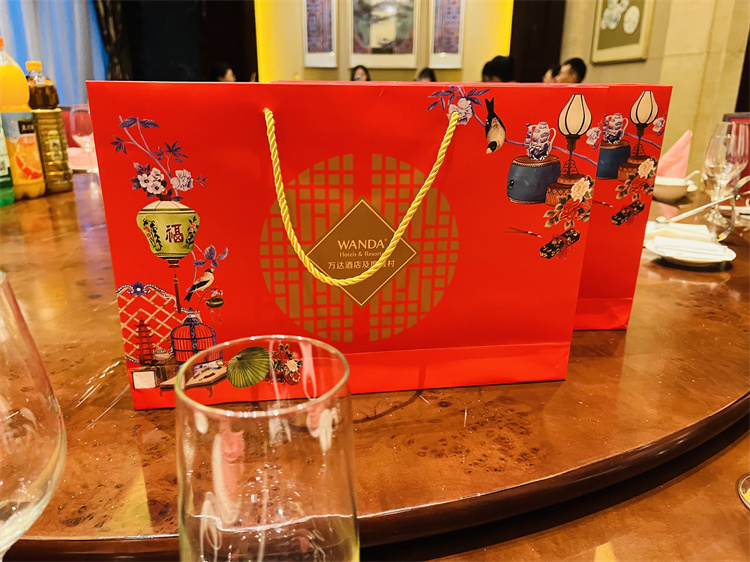
Do you know the Chinese Traditional Mid-Autumn Festival?
The Meaning of Mid-Autumn Festival The Mid-Autumn Festival has a long history. The festival is held on the 15th day of the 8th month of the lunar calendar with a full moon at night, corresponding to mid-September to early October in the Gregorian calendar. To the Chinese, Mid-Autumn Festival means family reunion and peace. The festival is celebrated when the moon is believed to be the biggest and fullest. To the Chinese, a full moon is a symbol of prosperity, happiness, and family reunion. How the Chinese Celebrate Mid-Autumn? Many traditional and meaningful celebrations are held in most households in China. The main traditions and celebrations include eating mooncakes, having dinner with family, gazing at and worshipping the moon, and lighting lanterns. Because of its round shape, moon cakes symbolize good wishes, making moon cakes the main way to give gifts during the Mid-Autumn Festival. Good-looking moon cake gift bags have gradually become an important marketing tool for merchants. Compared with plastic moon cake gift bags, the non-woven gift bags produced by Jinchen are more in line with the pursuit of environmental protection in modern society. The non-woven gift bags are easier to print patterns, have strong toughness, are not easy to wear, and have more vivid color expressions. In addition, they can be used repeatedly, resulting in non-woven gift bags that are more cost-effective than plastic gift bags, and bring more obvious advertising benefits. Jinchen Nonwoven has 8 advanced PP spunbond nonwoven production lines, products include nonwoven rolls and post-processing products. There are many equipments in the post-processing workshop, including 3 sets of advanced automatic ultrasonic production lines for non woven bags, 4 advanced printing machines within the width 1.7m. We can customize non-woven gift bags according to your requirements, support any kinds of logo, patterns and pictures printed on nonwoven gift bag. If you are interested in learning more about our nonwoven gift bag, call us at (86) 769 82270666 and we will gladly provide you with all the advice you require.
Do you know the Chinese Traditional Mid-Autumn Festival?
Dongguan Jinchen Nonwoven Co., Ltd.2022-09-07 17:51:28
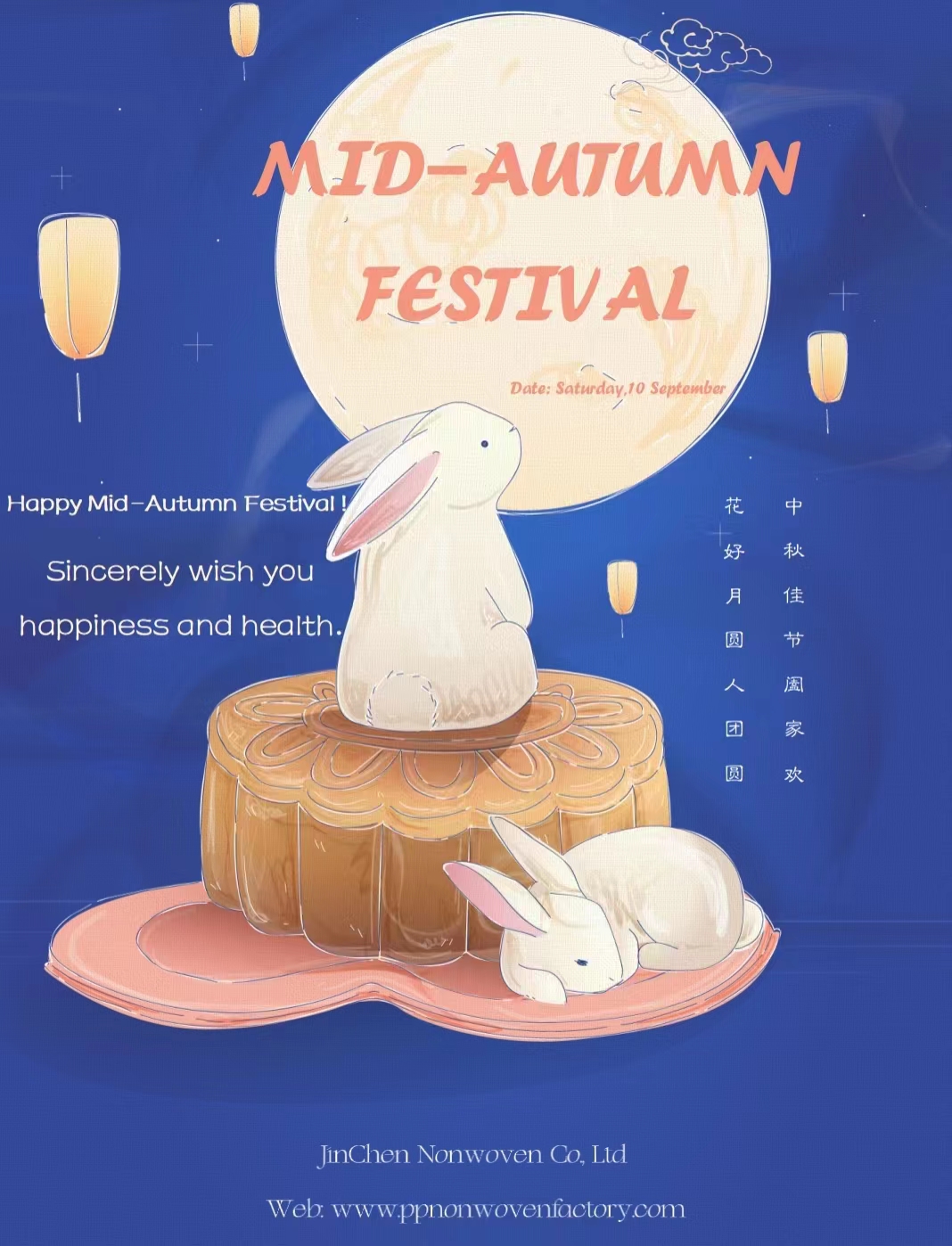
Do you know the Chinese Traditional Mid-Autumn Festival?
The Meaning of Mid-Autumn Festival The Mid-Autumn Festival has a long history. The festival is held on the 15th day of the 8th month of the lunar calendar with a full moon at night, corresponding to mid-September to early October in the Gregorian calendar. To the Chinese, Mid-Autumn Festival means family reunion and peace. The festival is celebrated when the moon is believed to be the biggest and fullest. To the Chinese, a full moon is a symbol of prosperity, happiness, and family reunion. How the Chinese Celebrate Mid-Autumn? Many traditional and meaningful celebrations are held in most households in China. The main traditions and celebrations include eating mooncakes, having dinner with family, gazing at and worshipping the moon, and lighting lanterns. Because of its round shape, moon cakes symbolize good wishes, making moon cakes the main way to give gifts during the Mid-Autumn Festival. Good-looking moon cake gift bags have gradually become an important marketing tool for merchants. Compared with plastic moon cake gift bags, the non-woven gift bags produced by Jinchen are more in line with the pursuit of environmental protection in modern society. The non-woven gift bags are easier to print patterns, have strong toughness, are not easy to wear, and have more vivid color expressions. In addition, they can be used repeatedly, resulting in non-woven gift bags that are more cost-effective than plastic gift bags, and bring more obvious advertising benefits. Jinchen Nonwoven has 8 advanced PP spunbond nonwoven production lines, products include nonwoven rolls and post-processing products. There are many equipments in the post-processing workshop, including 3 sets of advanced automatic ultrasonic production lines for non woven bags, 4 advanced printing machines within the width 1.7m. We can customize non-woven gift bags according to your requirements, support any kinds of logo, patterns and pictures printed on nonwoven gift bag. If you are interested in learning more about our nonwoven gift bag, call us at (86) 769 82270666 and we will gladly provide you with all the advice you require.
Do you know the Chinese Traditional Mid-Autumn Festival?
Dongguan Jinchen Nonwoven Co., Ltd.2022-09-07 17:51:28

Using row cover to protect your garden from frosts, pests and more
What Is Row Cover?Row cover, also called floating row cover or spun-bonded row cover, is a light-weight and gauze-like white fabric made from polypropylene. Row cover ranges in thicknesses. A lighter weight fabric, might be labeled as 15gram to 34gram. Row cover can be cut to size using sharp scissors, which is helpful because it typically comes in large rolls of varying widths and lengths.Rayson makes two shapes of row cover. One is in piece, the other one is in roll. The popular size in piece is 1.6m x 10m. It is folded and packed in a polybag. The size for roll is also 1.6m x 10m. But it is with folded width to 80cm which makes it easier for packing. Why Use Row Cover?1. Protect Warm Season Crops Against FrostGarden fabric varies in weight and density. To keep plants protected from frost, you’ll need a heavier weight material that is specifically created to trap heat.2. Protect Cool Season Crops From Heat, or Warm Them Up in WinterRow covers also allow you to extend the harvest of cool weather crops such as kale by providing relief from the hot sun.3. Keep Pests OutA lightweight floating row cover can change everything if insects, rabbits, or deer often feast on your plants. Look for ones that are marketed for this purpose.4. Reduce Transplant ShockSeedlings grown indoors often can’t handle the stress of outdoor weather right away.So, seedlings are typically hardened off, which means they are slowly introduced to the outdoors before being transplanted into the garden.How to Use the plant Covers?You can cover the plant covers for freeze over your the plants loosely directly and then secure the plant frost blanket with soil, stones or staples. You can also support the floating row covers with a hoop, make enough room for plants to breath and grow. You could also cut the plant covers into different sizes for different purposes.
Using row cover to protect your garden from frosts, pests and more
Foshan Rayson Non-woven Co., Ltd.2022-08-27 15:04:52
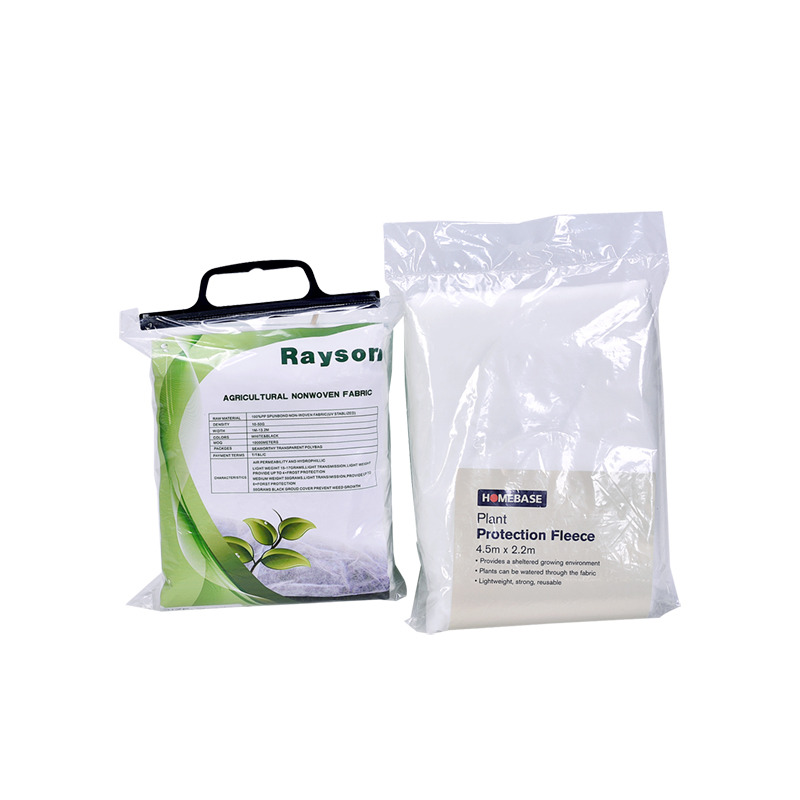
You may also like

High Quality memory foam lumbar support Cushion Wholesale-RouNuo

Best Professional Memory Foam mattresses Product manufacturers FactoryPrice-ROUNUO

Best memory foam bolster dog bed&memory foam pet beds FactoryPrice-ROUNUO

China memory foam neck support pillow&Circle Pillow manufacturers-ROUNUO

Memory Foam Knee Pillow

Best memory foam u neck pillow Travel Pillow with Factory Price-ROUNUO

Memory Foam Baby Pillow

Best Anti-Snoring memory foam support Pillow wholesale | RouNuo

Pencil case with zipper

Memory Foam Leg Pillow